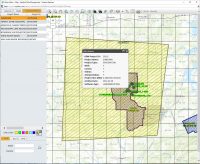
Looking for a particular interpretation project archive can be a lengthy, challenging process. Typically at E&P companies, archived files are located somewhere within the daily disk-based backups of the computing environment. While the data protection is beneficial, these backups often fall short of the geoscientist’s need to easily locate and access a project dataset.
The main issue is there is no context available on these backed up volumes of data, other than the disk locations from which they were backed up. Even basic information such as what kind of data are on these backups is not captured. The daily back-ups are merely system-based snapshots of technical disks and are designed to allow for a system restore or rebuild after a disk failure. The data are typically not easily searchable by geoscientists because none of the valuable metadata associated with their projects have been captured or indexed.
Exposing Data Generates Value
Geoscientists want and need access to all of the available data in an area of interest, including original seismic data and archived interpreted datasets, but often times the archived project datasets are ignored simply because they are not exposed. For this reason Katalyst Data Management, after focusing on seismic data management for 30 years, recently expanded their solution to encompass the unique requirements for managing interpretation project archives. Built on PPDM 3.8, their signature solution iGlass provides access to seismic volumes via an ESRI web-based map interface and now applies the same functionality to managing interpretation projects with the new module ProjectDataStor.

“We could not be more pleased to be able to meet the demands of our clients and the industry at large to provide a more complete data management solution… one that encompasses the multiple domains that our clients have to work with on a daily basis,“ said President and CEO Steve Darnell. “iGlass is built around the needs of geoscientists and one of those major needs is to access their interpretation projects as quickly and easily as they’re able to access seismic data. I am proud to say that ProjectDataStor can now meet those needs, with the same standards of quality and service that we’ve been able to achieve with our seismic data clients.”
To further protect the data, Katalyst uses advanced technologies to protect the information from the user’s computer to Katalyst’s systems and back. Systems are constantly monitored to prevent any potential problems that could compromise security or confidentiality. The full subsurface data life cycle can be managed with data accessibility that is not possible with traditional storage methods.
The above article was originally published in the Day 1 issue of the 2016 SEG Houston Daily News.

